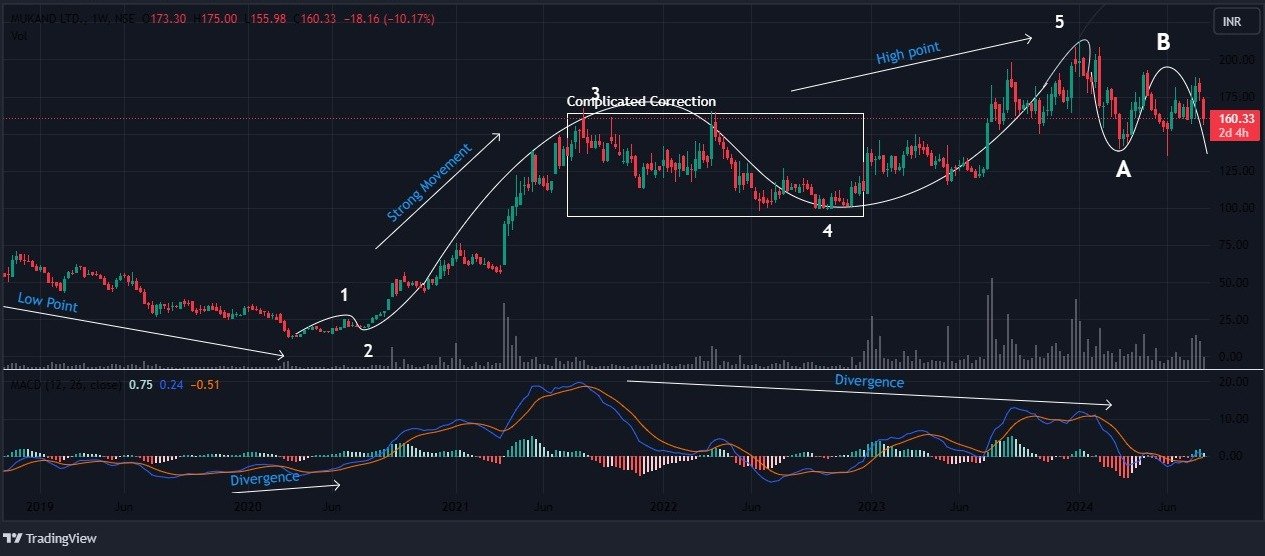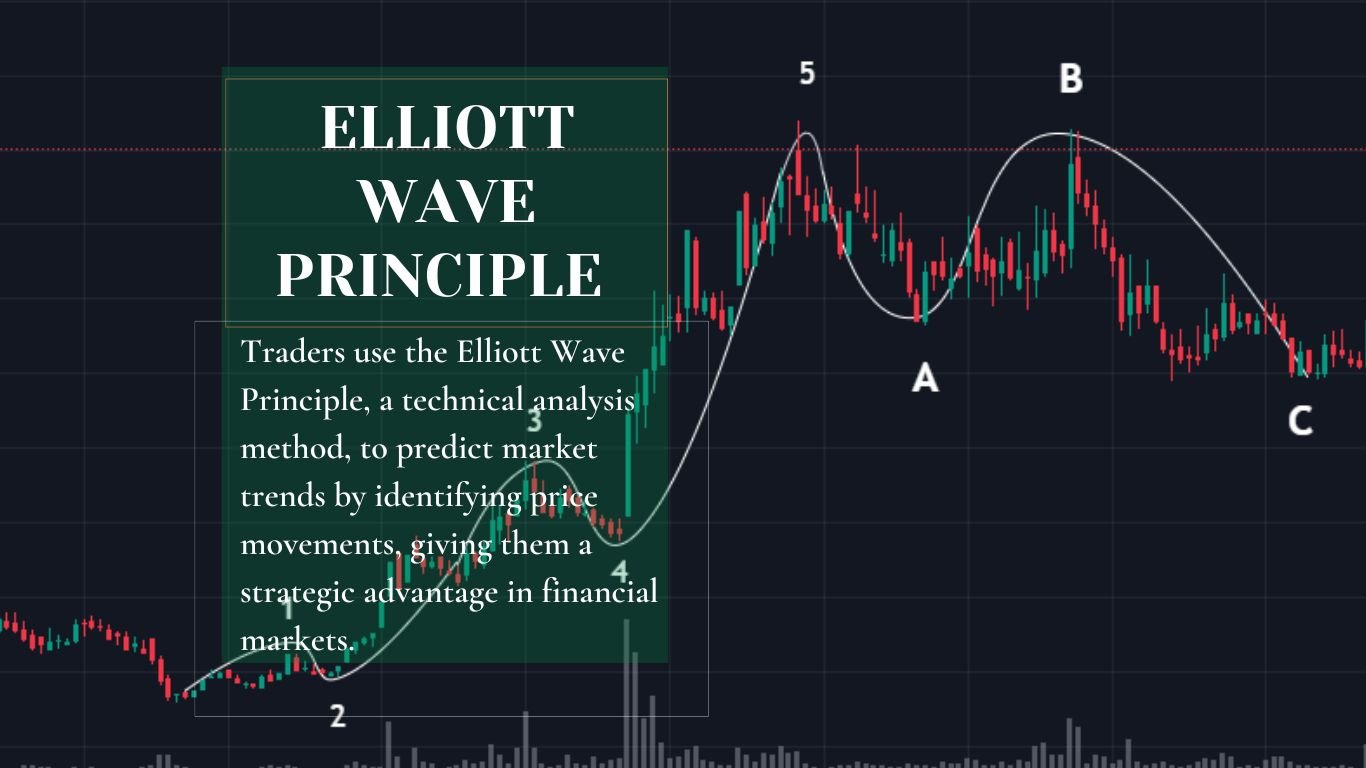Using the Elliott Wave Principle can provide you with an advantage in the financial markets and enhance your understanding of market dynamics. Trading opportunities can be found, impulse and corrective waves can be recognized, and strategies can be adjusted using Fibonacci retracement levels.
In Short
Do you feel prepared to learn how to predict the market? Explore the intriguing Elliott Wave Principle.
Using this potent instrument is about more than simply looking at charts and figures; it’s about getting to the bottom of market psychology. Just think about how cool it would be if you could foretell market moves just by watching the fluctuations in investor emotion.
Specifically, Ralph Nelson Elliott’s Elliott Wave Principle demonstrates the cyclical nature of the public’s optimism and pessimism.
Knowing where we are in the wave cycle helps predict price changes. This tried-and-true approach can measure the true powerhouse of the stock markets and investor psychology, rather than relying on abstract theoretical exercises.
If you look closely enough, you can see that the markets move in waves all the time, regardless of what the news says. When you use the Elliott Wave Principle, you’re not only watching the markets; you’re trying to predict their next move and find the most likely outcomes with the least amount of risk.
What Is the Elliott Wave Principle?
The Elliott Wave Principle is essentially a technical analysis method that traders employ to forecast market trends by identifying patterns in price movements. In the 1930s, Ralph Nelson Elliott, an American accountant, came up with this concept. The premise of this concept is that the repeated movements of financial markets reflect investor sentiment.
Elliott observed that market prices follow consistent patterns, which we now refer to as Elliott waves. These fluctuating patterns reflect the peaks and valleys of investor sentiment, allowing traders to better anticipate how the market will behave.
Elliott laid the groundwork for this kind of analysis in his seminal 1938 book The Wave Principle and subsequent papers. Market prices, he said, fluctuate in waves because people’s actions have a natural pattern.
Elliott discovered that by examining past price charts, these waves could accurately predict market movements for an extended period. Elliotticians today use the Elliott Wave Principle to study market cycles, find possible turning points, and predict how prices will move in the future. This principle is useful for understanding market dynamics and getting a strategic advantage in the complicated financial markets.
What Are the Basics of Elliott Waves?
Both motive waves and corrective waves are essential components of the Elliott Wave Principle. In an uptrend, a motive wave will drive prices upward, and in a downturn, it will push prices lower.
Corrective waves indicate consolidation or retracement phases that move counter to the main trend.
Three motive waves and two corrective waves make up a conventional Elliott wave cycle. In this setup, the first three waves are the trend-advancing motive waves, while the second and fourth waves are the trend-reversing corrective waves.
This five-wave pattern has a fractal nature that extends beyond a single time frame; smaller time frames also exhibit similar wave patterns, making the Elliott Wave Principle applicable to a wide range of market conditions.
To keep up with the regular rhythm of market psychology, the Elliott Wave theory assigns a numerical value to each wave in the cycle. The Elliott Wave theory subdivides typical motive waves into five smaller ones, revealing the internal structure of the market trend.

There is a distinct five-wave pattern for waves 1, 3, and 5, while waves 2 and 4 frequently create intricate correction patterns.
Traders may make use of Fibonacci retracement levels to gauge possible market changes, and this methodical approach lets them detect and quantify waves.
Wave 3 holds significance in Elliott Wave Theory, as it frequently signifies the most robust and prolonged stage of a trend. When large institutions start investing in the market, it generally starts a domino effect of retail traders getting in on the action and media attention.
If you can spot wave 3 coming on the horizon, you’ll be in a prime position to capitalize on its tremendous momentum and substantial price change.
Market movements follow a perfect Elliott Wave pattern in theory, with five distinct sub-waves: an impulsive wave, two corrective waves, and a trend reversal wave. Motive waves are strong and smooth, whereas correction waves are chaotic and erratic.
There are a number of rules that analysts may follow to improve their wave counts; for example, waves often have varying depths and complexity, with wave 3 typically displaying the highest volume. Even though these details are important for mastering the Elliott Wave Principle, the basic idea is still to utilize the cyclical nature of market psychology to predict how prices will move in the future.
What Is the Elliott Wave Principle of Trading?
Traders that follow the Elliott Wave Principle look for two types of price movements in the financial markets: impulse waves and corrective waves.
Waves 1, 3, and 5 are the primary trend drivers in a motive wave, which consists of five sub-waves that run in the same direction. Waves 2 and 4 are temporary pullbacks. Corrective waves, in contrast to trend-following waves, often have a three-wave structure (A, B, C). With this framework in mind, traders may use the current position inside the wave cycle to foretell how the market will move in the future.
According to the Elliott Wave Principle, trading relies on spotting the third wave, or wave 3, which is often the longest and strongest phase, pushed by strong market momentum. Realizing wave 3’s early stages might lead to lucrative trading chances.
Traders also evaluate possible price targets and wave counts using Fibonacci retracement levels; this helps them refine their tactics to catch high-probability moves with minimal risk.
Intriguingly, waves 1, 3, and 5 can also manifest as sub-waves within impulse waves 1, 3, and 5, as well as within corrective waves A and C. As a result, there are a lot of different trade opportunities in each wave. The Elliott Wave Principle is a powerful tool for traders who want to understand how the market will move and how to use that knowledge to their advantage in the complicated financial markets.
Discover Elliott Wave methods and transform your trading! This method finds unique opportunities, allowing you to enter and exit the market with precision and in sync with its movements. Read more…
How to Identify Elliott Waves?
Can you now confidently recognize Elliott waves? A straightforward method will do for now. First, whatever the time frame you’re using, find a low point on your price chart that occurred recently. You may begin to count the waves from this most recent low. Next, track the price action from wave 1 all the way to wave 5 to see if it follows the Elliott Wave Principle and rules. Every wave must satisfy the precise requirements of motive and corrective patterns.
You may alternatively start your tally from a recent peak. Regarding this matter, carefully observe whether the corrective waves are developing in accordance with the Elliott Wave principles. To make sure your count is in line with the needed structure, make sure the three-wave (A-B-C) corrective pattern is obvious and distinct. This approach offers a fresh viewpoint on wave identification, which is especially helpful during market downturns.
Another effective approach can help identify Wave 3, the most powerful and extended wave in the Elliott Wave sequence. Find the point on the chart where the price undergoes a significant and abrupt shift. This robust motion usually signifies wave 3. After seeing this wave, check the waves before and after it to make sure they followed the same pattern. If your observations are correct, you have found an essential part of the Elliott Wave pattern. Another way to validate your wave count is to look for wave 4, which is characterized by complicated corrective patterns.

One such method is to use oscillators to detect critical moments when divergence has occurred. When a motive phase is about to begin or a corrective phase is about to conclude, oscillators frequently exhibit divergence. With the assistance of this divergence, you may potentially identify the beginning of a new wave cycle by seeing when the waves begin to change. To have a better grasp of wave patterns and make more accurate market forecasts, you should combine these strategies.
How Do You Calculate Elliott Wave?
In order to calculate Elliott Waves, one must first locate the beginning of a wave cycle, which is typically a noteworthy low or high point on the price chart. With this detailed guide, you can learn how to calculate and recognize Elliott waves:
1. Start With the Most Recent Low or High
Begin by identifying a recent low point, if the market is in an uptrend, or a recent high point, if the market is in a downtrend. This will be the starting point for your wave count.
2. Count the Waves
The motive waves are 1, 3, and 5, while the corrective waves are 2 and 4. Three sub-waves go in the same direction as the main trend (1, 3, and 5), while two corrective waves (2 and 4) move in the opposite direction. This makes up an impulse wave.
3. Apply Fibonacci Levels
Using Fibonacci retracement levels, check your wave counts. Take waves 2 and 4, for instance. Wave 2 usually retraces between 50% and 61.8% of wave 1, whereas wave 4 usually retraces between 38.2% and 50% of wave 3. To some extent, these levels lend credence to the wave structure.
4. Look For Key Characteristics
The third wave is the most powerful and longest of the three, frequently lasting longer than the first. Wave 4 is complicated and erratic, frequently exhibiting a diagonal pattern.
5. Use Oscillators for Confirmation
When wave 5 comes to a close, keep an eye out for indications of price activity diverging from oscillators such as the MACD or RSI. This divergence can signal the onset of a corrective wave or the conclusion of an impulsive wave.
6. Identify the Corrective Waves
A three-wave corrective pattern (A, B, and C) should be visible following the five-wave impulse sequence. After wave A normally goes counter to wave 5’s trend, wave B retraces it, and wave C continues in the same way as wave A, finishing the correction.
7. Look for Fractal Patterns
Because Elliott Waves are fractal in shape, they exhibit repeating patterns across various time intervals. Verify your wave counts by comparing periodicities across shorter or longer time intervals.
Elliott Wave theory can detect price changes in option premium charts. Index options are easy to trade and offer broad market exposure because stock market movement affects their value. Read more…
Final Thoughts
Every stage of Elliott Wave research delves further into understanding market behavior, from identifying important low and high points to utilizing Fibonacci retracement levels and oscillators for confirmation. Keep in mind that the Elliott Wave Principle delves deeper than wave counting to reveal the investor psychology at work in the market.
Being able to anticipate market stages will greatly improve your trading selections, whether you’re noticing the strong wave 3 or the complicated corrective wave 4. Trading with confidence and precision in the complicated financial markets is possible with practice and careful study of the Elliott Wave Principle.
Disclaimer
This article is provided for informational purposes only and does not offer financial advice. Trading and investing involve risk, and past performance is not a guarantee of future outcomes. Before making investment decisions, readers should conduct their own research and consider their individual circumstances. The author and platform are not responsible for any financial losses or damages resulting from the use of this information. Get personalized advice from a trained financial counselor.













Leave a Reply